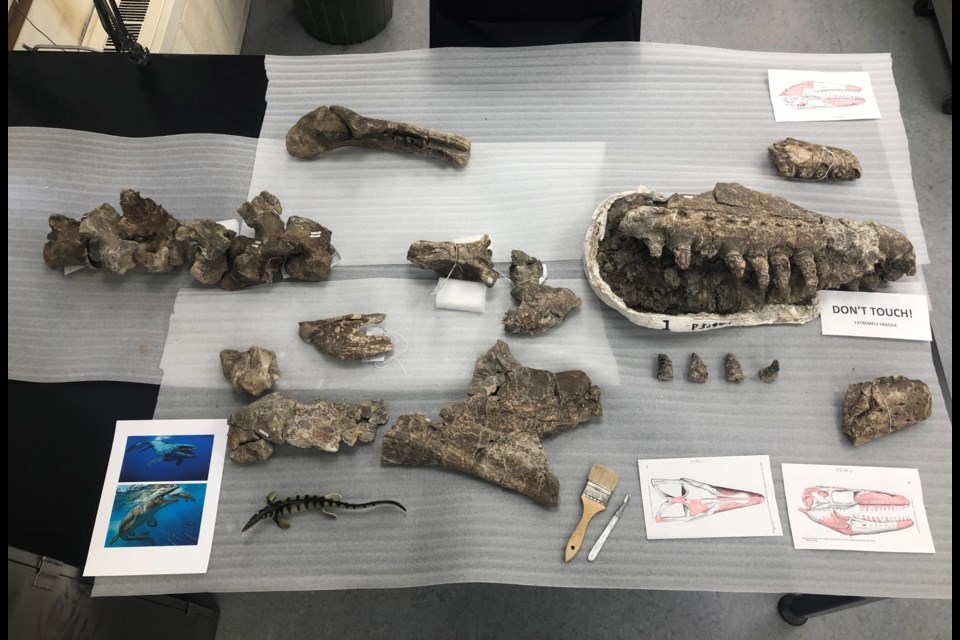REGINA — The Royal Saskatchewan Museum unveiled a new fossil of a prehistoric sea giant recently discovered in Saskatchewan, which will soon be on display as part of a new exhibit planned for the next few years.
The remains of a Prognathodon, a large species of mosasaur, have been discovered in southwest Saskatchewan and finally unearthed.
"This is a very significant find and we are very excited about the prospects of this specimen," said Parks, Culture and Sport Minister Laura Ross.
Prognathodons are related to another marine species already in the RSM collection called a Tylosaurus, which are a larger species of mosasaur. Both lived during the Cretaceous Period, approximately 75 million years ago.
Nicknamed the “T.Rex of the sea” because of their massive skulls and teeth adapted for both cutting and crushing, Prognathodons are considered to be a specialized marine predator that lived on a diet of tough shelled prey, like turtles and ammonites.
The RSM revealed that the marine reptile will be joining it's fossil collection in the next three to four years, as paleontologists are still working to uncover the aquatic reptile in its entirety.
The remains were first discovered in 2012 in Grasslands National Park, near Val Marie, Sask., originally spotted by an area resident and reported to Parks Canada for inspection.
After initial inspection by RSM staff, the first small skull fragments were collected in 2012 and more surface fragments again in 2013.
Staff then secured a permit to properly dig at the site in 2019 to unearth more material from just under the surface. In 2021, paleontologists, RSM staff and graduate students descended on the site to expand the dig and trace more surface material.
To date, the majority of the skull, neck and a few bones from further along the skeleton have so far been recovered.
"We were pleasantly surprised to find most of the front of the skull was preserved, and additional bones are running into the hillside," said RSM paleontologist Dr. Ryan McKellar.
The skull measures a whopping 130 centimetres in length, outpacing the other three known Canadian specimens collected in Alberta, which measure roughly 80 to 90 centimetres.
Those working at the dig site are hoping to uncover more of the body over the coming summer, which is anticipated to measure around 10 metres in length.
The discovery of the Prognathodon is just another confirmation of Saskatchewan’s rich archeological history, said the RSM, and another look into the province’s past as an aquatic ecosystem.
Prognathodon lived in what was known as the Western Interior Seaway, a shallow continental sea extending from the Gulf of Mexico to the Arctic Ocean, which stretched over southern Saskatchewan.
“This giant Prognathodon, found in Grasslands National Park, adds to our knowledge of the ancient sea life that once covered Saskatchewan,” said Steven Guilbeault, Minister responsible for Parks Canada.
The west area of Grasslands National Park is known to be an excellent place for fossil discovery due to the park’s extensive badlands exposures, said experts. Bearpaw Shale deposits from the Western Interior Seaway are also common in this area.
Western Canada as a region has unearthed some of the country’s most exciting fossil finds, including in Saskatchewan and Alberta.


.jpg;w=120;h=80;mode=crop)

